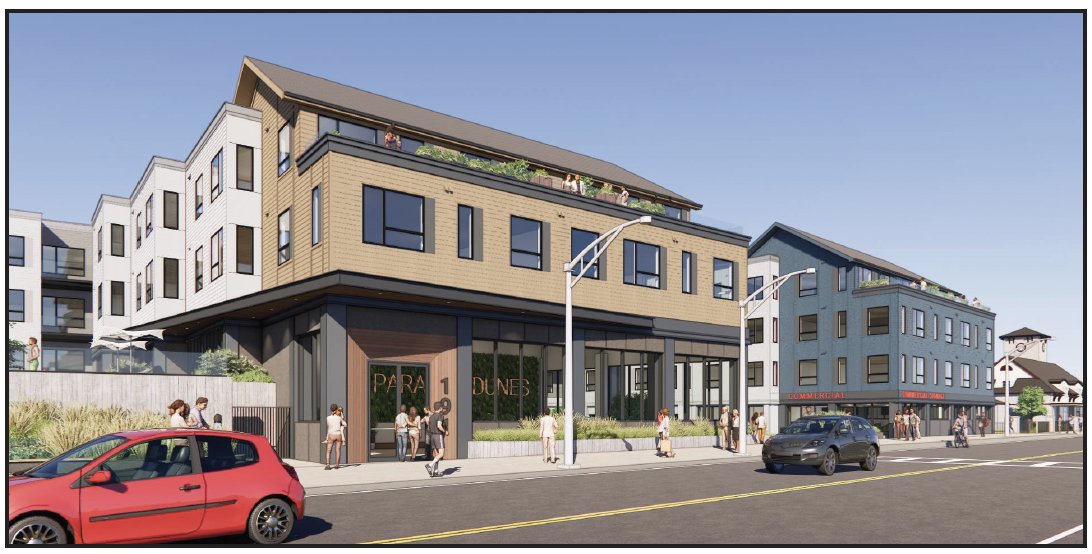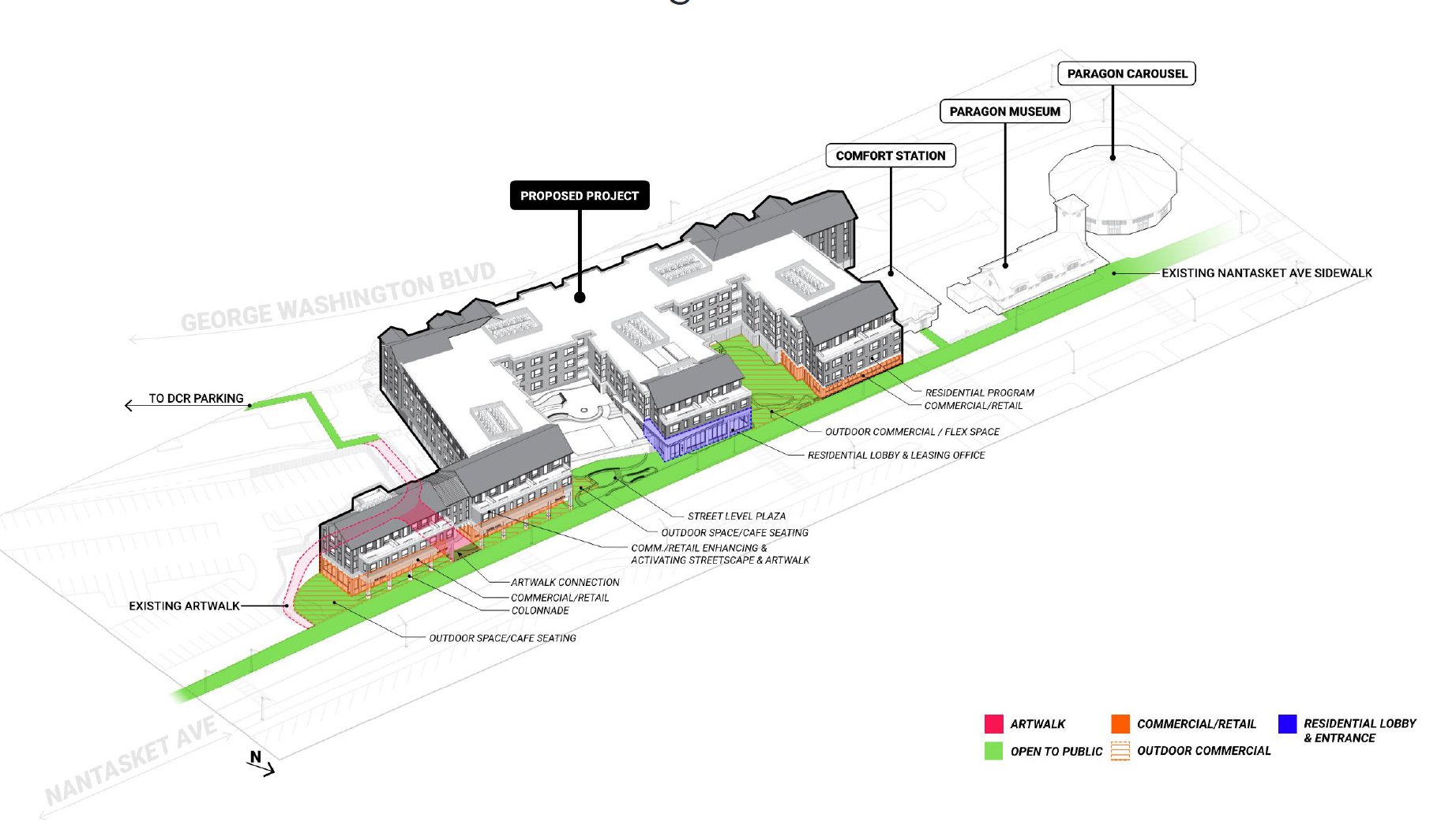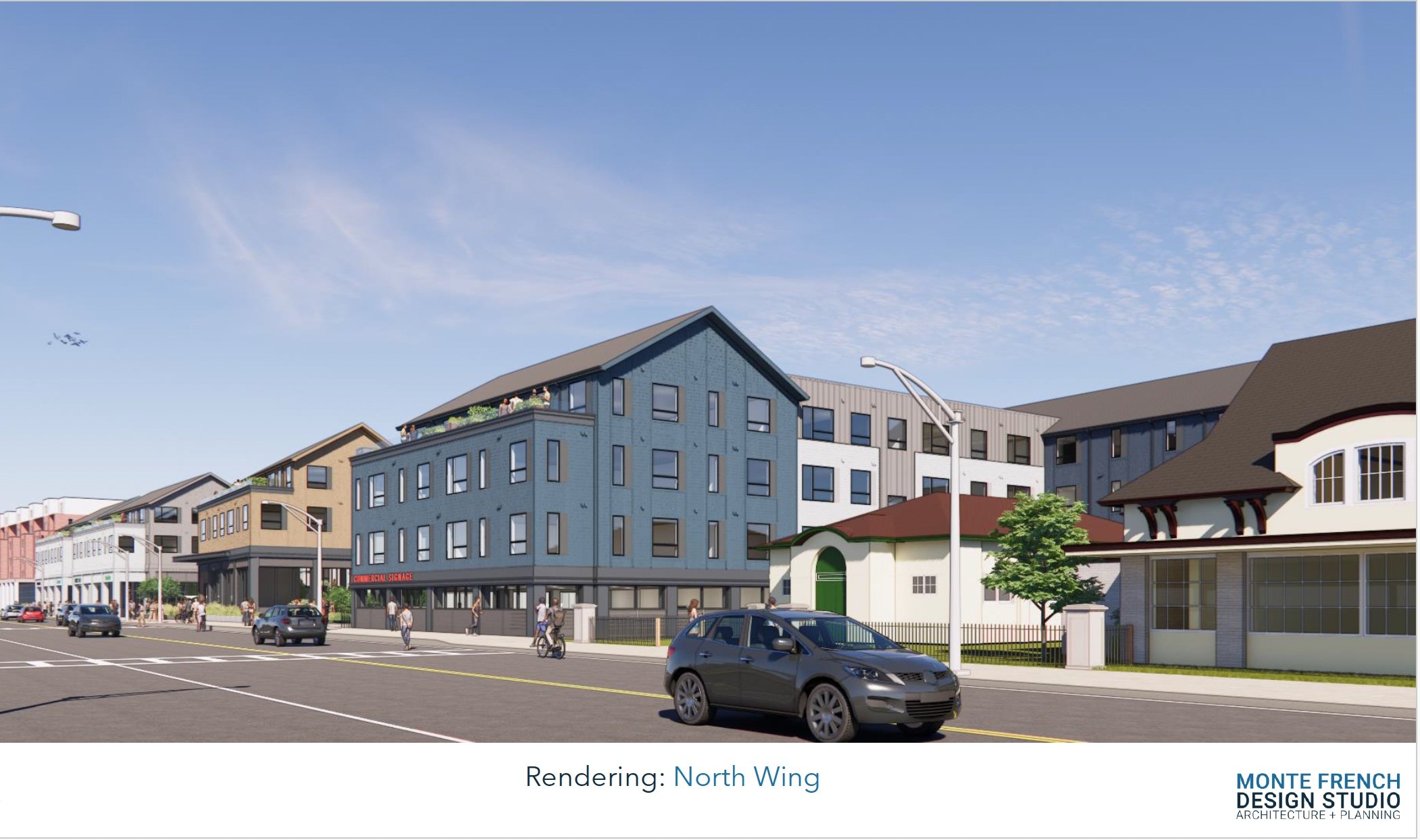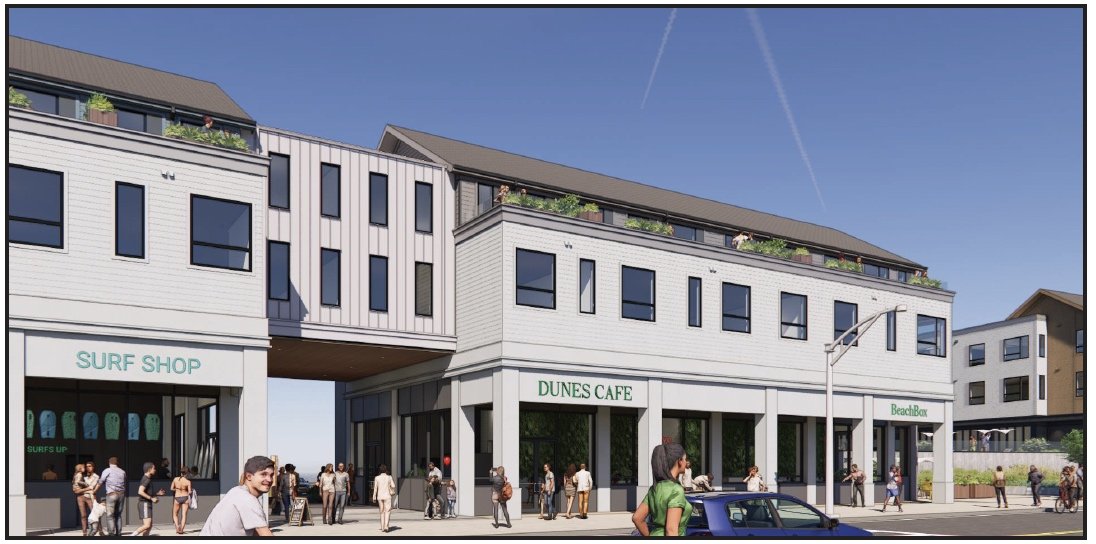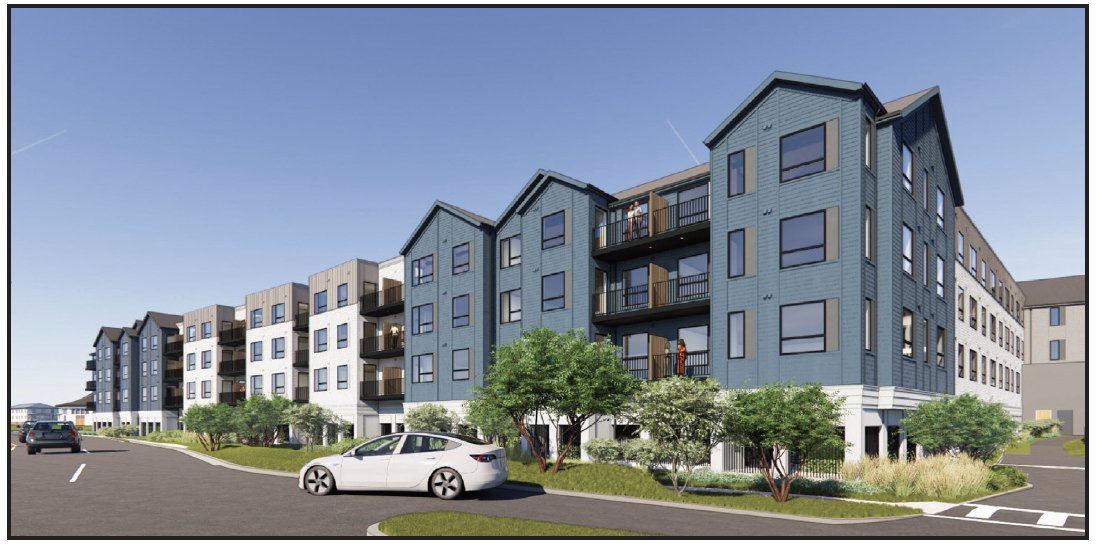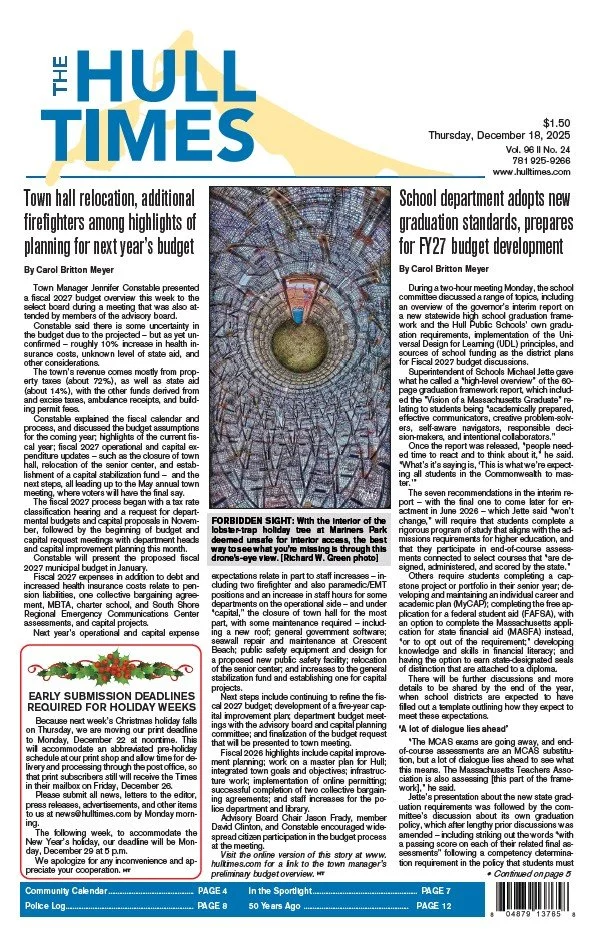On Monday, after beginning with a clip of the lyrics from the song “Big Yellow Taxi” – “Don’t know what you got till it’s gone; They paved paradise and put up a parking lot” – member Dan Kernan summed up his vision for the land as one of “community, sustainability, prosperity, and continuity.”
HRA Clerk Adrienne Paquin said that throughout the years, the HRA has “changed goals and widened its purview to support town goals, while giving nearly $2 million to town or various town organizations since 2000.”
“We don’t have to settle for short-term gains versus long-term vision…we waited all this time, let’s give the town something worth waiting for; taking public good into consideration, public good is priceless,” Paquin said.
She also clarified the HRA is not bound to do anything specific with the land; however, the authority would be required by the rules of any Urban Renewal Plan it adopts.
“If we pair lack of federal and state obligations and options in the URP plan, we have the ability to do what the town needs and wants today in 2024,” said Paquin.
On March 11, HRA Chair Dennis Zaia presented his ideas, which included housing units, a public safety building, mobile stage, art installations, contour seating, gardens, and a memorial honoring those from whom the land was originally taken.
Bartley Kelly, who has served on the HRA for 31 years, said he is still “in favor of draft URP Option 2 as it was presented” because, in his opinion, “housing is key” to creating the income necessary to accomplish the development of the park areas to create connection from the ocean to the bay. However, his desire to implement Option 2 does not mean he is “not open to improvements and making the plan better.”
Previously, architectural designer John Ruffo described Option 2 as “an open space system complimented by a series of uses; bordered by potential development uses and traffic.” He said the plan provides an opportunity to “link a series of parks from the memorial to North Park to, what we are calling the promenade, creating great open space, great buildings of different scales, and a public realm to knit it all together.”
HRA Treasurer Joan Senatore said she would like the land to “be improved and developed for multi-use purposes…also fulfilling the HRA mission to create a sense of place.”
“There have been over 40 years of sunrise and sunset views, access to beach and bay, gathering for community events, why should that change?” Paquin asked. “At a macro level, my vision is a park and area for events all designed with climate resiliency in mind.”
Climate resiliency was also on Kernan’s mind as he pointed out how coastal surges and flooding have become more frequent and more severe, referencing an image of a heavily flooded area located just blocks from the HRA land.
Identifying some “micro pieces” of her macro idea, Paquin indicated pollinator gardens, an area for visitors to take pictures of the vistas, water collection towers to care for the plants in a park, art by local artists, and a relief display on the history of the neighborhood.
The HRA has been working on updating the application process for using the HRA parcels and Senatore encouraged citizens to “take the lead” to plan an event on the HRA land, as “the board only consists of five volunteer members who cannot do it all alone.”
The members also stressed the importance of working with the Department of Conservation and Recreation to improve the waterfront, which Senatore referred to as the “best asset in the town of Hull.”
Kernan said the HRA should incorporate the DCR Nantasket Beach Master Plan into its considerations and explore how to “leverage plans to reduce costs and maximize community benefit…coordinating on design, managing traffic flow, installing benches and tables, handling waste disposal, coastal resiliency, coordinating road plans, creating bike paths, and potentially engaging in land trades or financial support, if it is in the best interest of the community.”
Working with residents and businesses to streamline the draft URP was another key initiative highlighted by board members.
Kernan referenced studies demonstrating “community spaces support adjacent businesses and contribute to local economy,” and said his proposal seeks to extend the economic season beyond the summer months.
“I heard a lot of proposals wanting to keep it open space…If 100% open space, it will be 100% barren open space and won’t accomplish the initiatives,” said Kelly, pointing out the need to add tax revenue, while providing housing, and still supplying parking to the town.
“It’s crucial that we shift our focus beyond simple financial transaction, and instead envision a future that benefits our community today,” Kernan said. “Studies show every $1 invested in land conservation returns $4 to the economy; imagine if the HRA spent $2 million, we would contribute $8 million.”
Kernan also referenced studies concluding that parks increase property values while also increasing tourism and generating sales activity.
“Parks increase property values,” said Kernan, saying that according to the National Association of Realtors, “more than half of homebuyers say they would choose a home that was close to parks and open space over one that’s not.”
Kelly referenced the Nantasket Beach Overlay District, which has made it “more vibrant and walkable; a place where developers want to develop.”
Senatore echoed Zaia and Kelly, affirming the need for housing as income to pay for other recreational development on the land, but made it clear she did not envision high-rises, but rather approximately 50 to 75 housing units, including an affordable component.
Paquin said members need to get “creative” for funding sources; for instance, open space grants, climate resiliency funds, public and private partnerships, in addition to profits from HRA parking and the more than $1 million the HRA has in the bank.
Senatore agreed with citizens and fellow board members the need to explore using parking areas outside of the HRA with shuttles, to compensate for the loss of capacity when the land is redeveloped. Recreation, a park with tables, mobile stage, a drive-in movie venue, art events, and seating were part of Senatore’s long-term vision for the HRA.
In their individual presentations, both Kernan and Paquin referenced the community feedback the HRA paid to conduct, in which 85% of respondents listed open space as the highest, most desired use for this land.
“Now that we have gathered this input, we must use it,” said Kernan.
HRA members pointed toward the need for “collaboration and compromise” as they move forward, working with each other, citizens, businesses, the town manager, select board, and other boards to be sure the HRA land is utilized in the best manner possible for the town.
Paquin acknowledged throughout the draft URP, there are references to the town’s vision and desires of the public, saying that if “we genuinely use these words in the URP, then we must be sure it is truly representative of the town’s vision and representative of the public.”
“We are the elected board. Let’s get the show on the road…look at the plan as a whole, pick the things we want and have them fit where they need to fit,” said Kelly. “Last spring, we were at the 20-yard-line, now we have been pushed back, but I think we can kick a field goal to create the economic stimulus this town needs.”
“Our planning should be informed by how we got here, but our decisions should be based on a clear understanding of the current realities, community input, our needs, and the opportunities before us,” said Kernan. “We should do what we believe is best for the community based on our current knowledge today, no matter how much time or effort has been put into prior plans.”
For more information about the HRA and to watch recordings of its meetings, visit hra02045.com.
Like what you’re reading? Stay informed with a Hull Times subscription by clicking here.
Do you have an opinion on this issue? Click here to write a Letter to the Editor.












